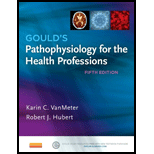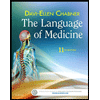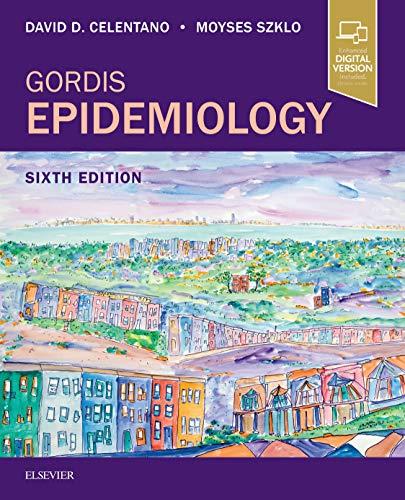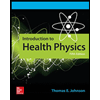
To describe: The common diagnostic tests for cardiovascular function.
Concept introduction: Heart is the most important organ of the circulatory system. It consists of four chambers namely right atrium, left atrium, right ventricle, and left ventricle. Heart has a complex anatomy with valves and chambers consisting of different functions for the circulation of blood. Heart disorders are ranked as the major cause of morbidity and mortality. Cardiovascular disease is a group of diseases that includes heart or blood vessels.
Explanation of Solution
Diagnostic tests are an approach to collect clinical information for making a diagnosis. The diagnostic tests for cardiovascular function are as follows:
Electrocardiogram (ECG):
ECG will record the electrical signals and detect the irregularities in the heart rhythm and structure. It is helpful in diagnosis and monitoring of myocardial infarction, pericarditis, and infection.
Echocardiogram:
Echocardiogram is also called as cardiac echo, which is a sonogram of the heart. This will show a detailed view of the heart structure and function.
Exercise stress tests:
Exercise stress will help to assess the common cardiovascular function. The stress test will raise the heart rate with exercise while performing heart tests and imaging to check the way the heart responds. Exercise-induced problems like arrhythmias can also be assessed by exercise stress tests.
Chest x-ray film:
The evidence of pulmonary congestion due to heart failure and the shape and size of the heart can be detected using chest X-ray film.
Nuclear imaging;
The size of the infarct formed in heart, ventricles function, and extent of myocardial perfusion can be detected using nuclear imaging with radioactive substances. The different levels of tissue mass can be detected by tomographic studies. The damaged areas of myocardial tissue can be detected by nuclear medicine studies.
Single-photon emission computed tomography (SPECT):
SPECT is a specialized computed tomography scan that will properly assess the cardiac ischemia at rest.
Cardiac catheterization:
Cardiac catheterization will help to view the internal structure of heart, measure pressures, and assess the function of the heart. Cardiac catheterization is performed by passing a catheter through appropriate blood vessel to the ventricle. The central venous pressure and pulmonary capillary wedge pressure that indicates the flow of blood to and from the heart can be determined by the use of catheters.
Angiography:
The flow of blood in the coronary artery can be viewed by coronary angiography. The heart blood vessels can be seen by the coronary angiogram using X-ray imaging. Angiogram will detect the blocks using X-rays taken through the injection of a contrast agent.
Troponin blood test:
Troponin is a complex protein that takes part in muscle contraction. The level of troponin can be detected using troponin blood test. Higher level of troponin protein indicates more damage to the heart. The troponin proteins are released when the cardiac muscle gets damaged.
Blood tests:
Blood test will evaluate the levels of serum triglyceride, cholesterol, potassium, sodium, and other electrolytes. Blood tests will also detect hemoglobin, differential count for white cells, or blood cell counts.
Want to see more full solutions like this?
Chapter 12 Solutions
Gould's Pathophysiology for the Health Professions, 5e
 The Language of Medicine, 11eHealth & NutritionISBN:9780323370813Author:Davi-Ellen Chabner BA MATPublisher:Saunders
The Language of Medicine, 11eHealth & NutritionISBN:9780323370813Author:Davi-Ellen Chabner BA MATPublisher:Saunders Gordis EpidemiologyHealth & NutritionISBN:9780323552295Author:David D. Celentano, Moyses SzkloPublisher:ELSEVIER
Gordis EpidemiologyHealth & NutritionISBN:9780323552295Author:David D. Celentano, Moyses SzkloPublisher:ELSEVIER Nutrition Through The Life CycleHealth & NutritionISBN:9781337919333Author:Brown, Judith E.Publisher:Cengage Learning,
Nutrition Through The Life CycleHealth & NutritionISBN:9781337919333Author:Brown, Judith E.Publisher:Cengage Learning, Health: The Basics (13th Edition)Health & NutritionISBN:9780134709680Author:Rebecca J. DonatellePublisher:PEARSON
Health: The Basics (13th Edition)Health & NutritionISBN:9780134709680Author:Rebecca J. DonatellePublisher:PEARSON Understanding Nutrition (MindTap Course List)Health & NutritionISBN:9781337392693Author:Eleanor Noss Whitney, Sharon Rady RolfesPublisher:Cengage Learning
Understanding Nutrition (MindTap Course List)Health & NutritionISBN:9781337392693Author:Eleanor Noss Whitney, Sharon Rady RolfesPublisher:Cengage Learning Introduction To Health PhysicsHealth & NutritionISBN:9780071835275Author:Johnson, Thomas E. (thomas Edward), Cember, Herman.Publisher:Mcgraw-hill Education,
Introduction To Health PhysicsHealth & NutritionISBN:9780071835275Author:Johnson, Thomas E. (thomas Edward), Cember, Herman.Publisher:Mcgraw-hill Education,





